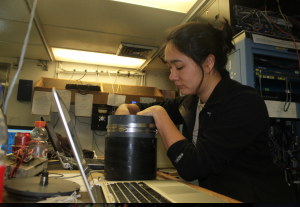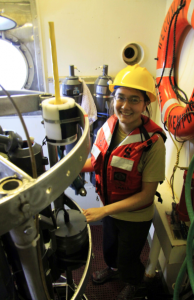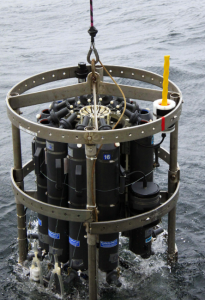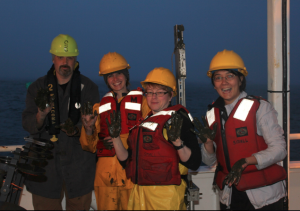Hello there-
This is Heather Beem, mechanical engineering graduate student at MIT/WHOI, and I’m reporting on initial testing of a flow sensor I’ve built. Rather than trying to collect samples at a specific location or time of day, I simply need time in the water to test if my instrument works!
This is my first time to build something from the ground up that is able to withstand the marine environment. I’m happy with how the design and fabrication has progressed, and am excited to bring this out of the lab and put it to the real test.
So why make a new flow sensor? Well, it’s been observed many times that biology has figured out clever mechanisms for accomplishing things that we’d like our own sensors/vehicles to be able to do. Specifically, it was recently noticed that harbor seals have unusually-shaped whiskers (they are wavy and asymmetric, instead of just a circular rod), and that these whiskers don’t seem to flop around while the seals are swimming.
I’ve spent time investigating this, by making my own seal-whisker shaped structure (scaled up) and measuring forces on this model in a water-filled towing tank. Indeed, at certain angles to the oncoming flow, the strange shape does largely suppress Vortex-Induced Vibrations, a classical fluid mechanics phenomenon (take any rod and drag it upright through some water- I guarantee you’ll notice the rod strongly vibrating!). Seals could be using this capability to aid in sensing various flow patterns (for ex, the wake of a fish it wants to eat).
This cruise has not only provided info that de-mystifies the ship time request procedures, but has also been a fantastic way for me to learn about all the things that go into making an ocean-going instrument. Each day I’ve encountered something that has turned into a learning opportunity: dealing with overheating, cracks in pressure housings, etc.
My sensor is mounted to the CTD rosette, making it a simple (though strange-looking) add-on to a standard piece of equipment that is already set up on the winch.
It’s also been fun and informative to lend a helping hand to the other operations, such as the mud coring (above).




